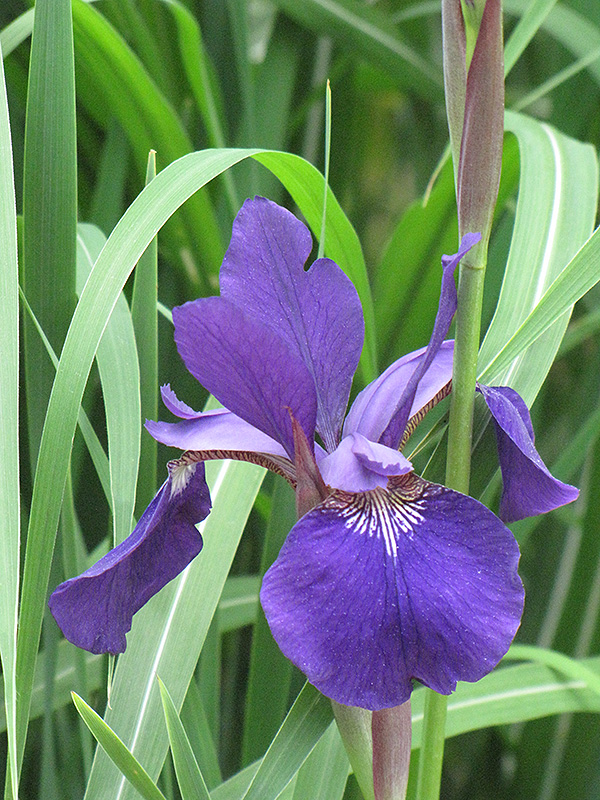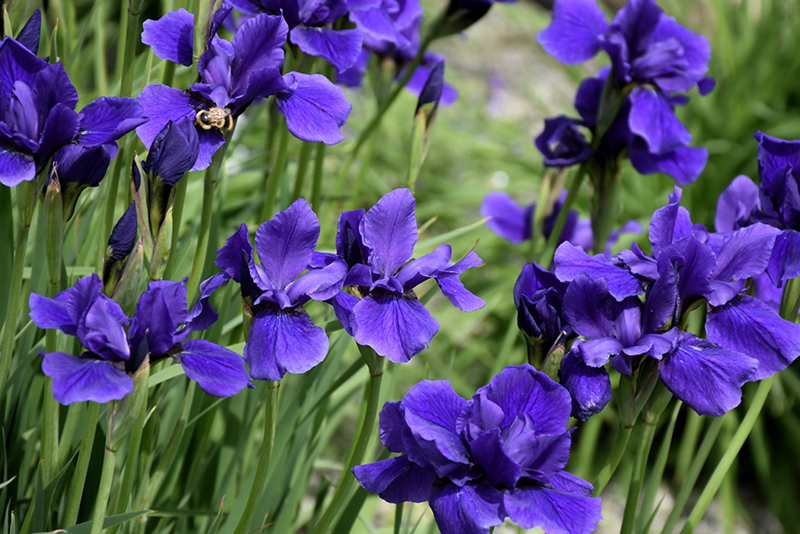Caesar's Brother Siberian Iris
Iris sibirica 'Caesar's Brother'
Plant Height: 28 inches
Flower Height: 4 feet
Spacing: 18 inches
Sunlight:
![]()
![]()
Hardiness Zone: 2
Ornamental Features
Caesar's Brother Siberian Iris has masses of beautiful royal blue flag-like flowers with white throats and a gold beard at the ends of the stems in late spring, which emerge from distinctive purple flower buds, and which are most effective when planted in groupings. The flowers are excellent for cutting. Its sword-like leaves remain green in color throughout the season.
Landscape Attributes
Caesar's Brother Siberian Iris is an herbaceous perennial with tall flower stalks held atop a low mound of foliage. Its relatively fine texture sets it apart from other garden plants with less refined foliage.
This plant will require occasional maintenance and upkeep, and should be cut back in late fall in preparation for winter. Deer don't particularly care for this plant and will usually leave it alone in favor of tastier treats. It has no significant negative characteristics.
Caesar's Brother Siberian Iris is recommended for the following landscape applications;
- Mass Planting
- General Garden Use
Planting & Growing
Caesar's Brother Siberian Iris will grow to be about 28 inches tall at maturity extending to 4 feet tall with the flowers, with a spread of 24 inches. When grown in masses or used as a bedding plant, individual plants should be spaced approximately 18 inches apart. The flower stalks can be weak and so it may require staking in exposed sites or excessively rich soils. It grows at a medium rate, and under ideal conditions can be expected to live for approximately 10 years. As an herbaceous perennial, this plant will usually die back to the crown each winter, and will regrow from the base each spring. Be careful not to disturb the crown in late winter when it may not be readily seen!
This plant does best in full sun to partial shade. It is quite adaptable, prefering to grow in average to wet conditions, and will even tolerate some standing water. It is not particular as to soil type or pH. It is somewhat tolerant of urban pollution. This is a selected variety of a species not originally from North America. It can be propagated by division; however, as a cultivated variety, be aware that it may be subject to certain restrictions or prohibitions on propagation.

